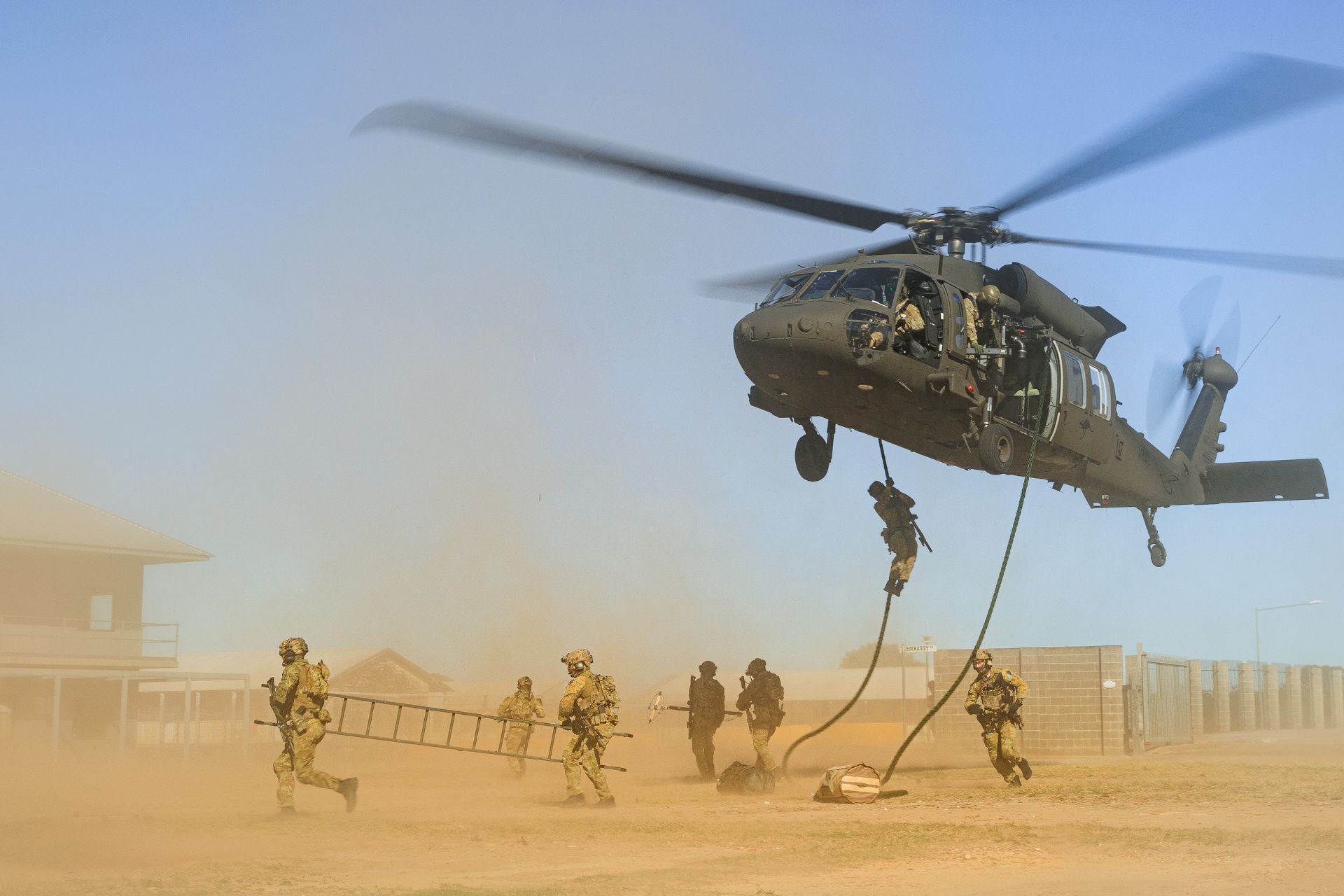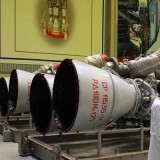Black Hawk UH-60M Helicopters Enhances Mobility and Responsiveness of Australian forces

{loadposition bannertop}
{loadposition sidebarpub}
On 19 February 2025, Australia achieved Initial Operational Capability (IOC) for its UH-60M Black Hawk helicopters just 15 months after the first units entered service in 2023. This rapid implementation is among the fastest deployments of a new military capability in recent Australian defense history, demonstrating the government’s intent to swiftly enhance its armed forces and optimize their operational readiness.
Follow Army Recognition on Google News at this link
Australia officially reached IOC for its UH-60M Black Hawk fleet in February 2025, reaffirming its commitment to strengthening its air mobility capabilities (Picture source: Australian MoD)
The program has completed essential testing, evaluation, and training phases while establishing a robust fleet support system. The objective is to ensure a gradual capability buildup, with seven additional helicopters scheduled for delivery in 2025, reaching a total of 40 aircraft by 2030. This phased schedule allows the Australian Defence Force (ADF) to enhance its operational capabilities while ensuring the continuous availability of its aerial assets and a smooth transition from the retired MRH90 Taipan fleet.The UH-60M Black Hawk is a versatile transport and assault helicopter designed by Sikorsky and used by numerous armed forces worldwide, including Australia. Equipped with powerful engines, a reconfigurable cabin, and a payload capacity of 9,000 pounds (internally or externally), it performs various missions such as troop transport, firefighting, search and rescue, and special operations. Its reinforced armor and integrated weapon systems, including door-mounted machine guns and floor armor options, enable operations in contested environments. Thanks to its modular and digital architecture, the Black Hawk continuously evolves to meet future operational challenges, integrating new capabilities such as partial autonomy and enhanced engine performance with the GE Aerospace T901 engine.Australia officially reached IOC for its UH-60M Black Hawk fleet in February 2025, reaffirming its commitment to strengthening its air mobility capabilities. These helicopters replace the MRH90 Taipan fleet, which has been retired, and are designated for tactical transport, special forces support, and counter-terrorism operations. The ADF plans to operate a total of 40 Black Hawks, progressively delivered by 2030, with a second batch of seven aircraft expected in 2025. The program, in partnership with Lockheed Martin Australia, includes a national maintenance and support network, generating over 200 jobs and ensuring the long-term operational availability of the fleet.The integration of Black Hawks within the ADF addresses multiple strategic objectives. These helicopters fill capability gaps left by the MRH90 Taipan withdrawal and play a key role in counter-terrorism operations within the national territory. Beyond operational considerations, the program also strengthens cooperation between Australia and the United States, a strategic partnership that facilitates the modernization of Australia’s air capabilities. The acquisition and support agreement with Lockheed Martin Australia contributes to local job creation and the development of high-tech maintenance infrastructure across multiple locations, including Holsworthy, Brisbane, Oakey, and Western Sydney.The initial batch of helicopters is accompanied by a comprehensive support package, including training simulators for crews and maintenance personnel, advanced communication and navigation systems, and a national maintenance, repair, and overhaul (MRO) network. These facilities ensure optimal operational availability for the Black Hawk fleet while progressively increasing Australia’s autonomy in fleet maintenance and management, thereby enhancing national sovereignty over its air mobility capabilities.Deputy Prime Minister and Minister for Defence Richard Marles, along with Minister for Defence Industry and Capability Delivery Pat Conroy, highlighted the significance of this achievement for the ADF’s capabilities and Australia’s strategic alliance with the United States. This acquisition reflects the ongoing transformation of the Australian Army to address contemporary strategic challenges and strengthen its operational posture in the Indo-Pacific region.The operational deployment of the UH-60M Black Hawk marks a decisive step in the evolution of Australia’s air mobility capabilities. With a gradual buildup and reinforced local industrial support, this program ensures the ADF has a modern and effective tool for national and international missions in the coming years while consolidating the country’s operational and technological autonomy.

{loadposition bannertop}
{loadposition sidebarpub}
On 19 February 2025, Australia achieved Initial Operational Capability (IOC) for its UH-60M Black Hawk helicopters just 15 months after the first units entered service in 2023. This rapid implementation is among the fastest deployments of a new military capability in recent Australian defense history, demonstrating the government’s intent to swiftly enhance its armed forces and optimize their operational readiness.
Australia officially reached IOC for its UH-60M Black Hawk fleet in February 2025, reaffirming its commitment to strengthening its air mobility capabilities (Picture source: Australian MoD)
The program has completed essential testing, evaluation, and training phases while establishing a robust fleet support system. The objective is to ensure a gradual capability buildup, with seven additional helicopters scheduled for delivery in 2025, reaching a total of 40 aircraft by 2030. This phased schedule allows the Australian Defence Force (ADF) to enhance its operational capabilities while ensuring the continuous availability of its aerial assets and a smooth transition from the retired MRH90 Taipan fleet.
The UH-60M Black Hawk is a versatile transport and assault helicopter designed by Sikorsky and used by numerous armed forces worldwide, including Australia. Equipped with powerful engines, a reconfigurable cabin, and a payload capacity of 9,000 pounds (internally or externally), it performs various missions such as troop transport, firefighting, search and rescue, and special operations. Its reinforced armor and integrated weapon systems, including door-mounted machine guns and floor armor options, enable operations in contested environments. Thanks to its modular and digital architecture, the Black Hawk continuously evolves to meet future operational challenges, integrating new capabilities such as partial autonomy and enhanced engine performance with the GE Aerospace T901 engine.
Australia officially reached IOC for its UH-60M Black Hawk fleet in February 2025, reaffirming its commitment to strengthening its air mobility capabilities. These helicopters replace the MRH90 Taipan fleet, which has been retired, and are designated for tactical transport, special forces support, and counter-terrorism operations. The ADF plans to operate a total of 40 Black Hawks, progressively delivered by 2030, with a second batch of seven aircraft expected in 2025. The program, in partnership with Lockheed Martin Australia, includes a national maintenance and support network, generating over 200 jobs and ensuring the long-term operational availability of the fleet.
The integration of Black Hawks within the ADF addresses multiple strategic objectives. These helicopters fill capability gaps left by the MRH90 Taipan withdrawal and play a key role in counter-terrorism operations within the national territory. Beyond operational considerations, the program also strengthens cooperation between Australia and the United States, a strategic partnership that facilitates the modernization of Australia’s air capabilities. The acquisition and support agreement with Lockheed Martin Australia contributes to local job creation and the development of high-tech maintenance infrastructure across multiple locations, including Holsworthy, Brisbane, Oakey, and Western Sydney.
The initial batch of helicopters is accompanied by a comprehensive support package, including training simulators for crews and maintenance personnel, advanced communication and navigation systems, and a national maintenance, repair, and overhaul (MRO) network. These facilities ensure optimal operational availability for the Black Hawk fleet while progressively increasing Australia’s autonomy in fleet maintenance and management, thereby enhancing national sovereignty over its air mobility capabilities.
Deputy Prime Minister and Minister for Defence Richard Marles, along with Minister for Defence Industry and Capability Delivery Pat Conroy, highlighted the significance of this achievement for the ADF’s capabilities and Australia’s strategic alliance with the United States. This acquisition reflects the ongoing transformation of the Australian Army to address contemporary strategic challenges and strengthen its operational posture in the Indo-Pacific region.
The operational deployment of the UH-60M Black Hawk marks a decisive step in the evolution of Australia’s air mobility capabilities. With a gradual buildup and reinforced local industrial support, this program ensures the ADF has a modern and effective tool for national and international missions in the coming years while consolidating the country’s operational and technological autonomy.




